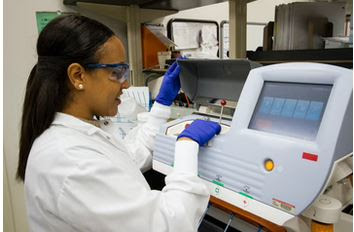How To Sublimate A Shirt?
To sublimate a shirt using dye-sublimation printing, you will need the following materials and equipment:
1. Sublimation printer: A printer specifically designed for sublimation printing, capable of printing with special sublimation inks.
2. Sublimation ink: Special ink formulated for sublimation printing, which becomes a gas when heated and bonds with the fabric.
3. Sublimation transfer paper: Specially coated paper that holds the sublimation ink and allows it to transfer to the fabric.
4. Heat press machine: A machine that applies heat and pressure to transfer the sublimation ink from the paper to the fabric.
5. White or light-colored polyester shirt: Sublimation works best on polyester or polyester-blend fabrics, as the ink bonds effectively with the polyester fibers.
Here are the steps to custom sublimation shirts:
1. Design and print your image: Create or select the desired design and print it onto the sublimation transfer paper using the sublimation printer and ink. Make sure to mirror the image before printing.
2. Preheat the heat press machine: Turn on the heat press machine and set it to the appropriate temperature according to the instructions provided by the transfer paper manufacturer. Typically, it ranges between 375-400°F (190-205°C).
3. Prepare the shirt: Ensure the shirt is clean and free of any wrinkles. Pre-press the shirt for a few seconds to remove moisture and wrinkles, if needed.
4. Position the transfer: Place the printed transfer paper with the design facing down onto the shirt, ensuring it is aligned correctly.
5. Apply heat and pressure: Carefully place the shirt with the transfer paper onto the bottom plate of the heat press machine. Close the machine and apply firm pressure as per the manufacturer's instructions. Typically, a pressure of around 40-60 psi is recommended.
6. Heat press process: The recommended time for sublimation can vary based on the equipment and materials used. Typically, it ranges from 45 to 60 seconds. Follow the instructions provided by the transfer paper manufacturer or the heat press machine manufacturer for the appropriate time.
7. Transfer removal: Once the time is up, open the heat press machine and carefully remove the transfer paper from the shirt. Be cautious, as both the shirt and transfer paper will be hot.
8. Cooling and finishing: Allow the shirt to cool down completely before handling or wearing it. This will ensure the sublimation ink sets properly. Once cooled, the shirt is ready to be worn or further processed if desired.
It's important to note that sublimation works best on
White or light-colored polyester fabrics, as the ink becomes transparent and
Blends with the fabric color. Sublimation does not work well on natural fabrics
Such as cotton, as the ink cannot bond effectively with the fibers.
Additionally, it's recommended to follow the specific
Instructions provided by the manufacturers of your sublimation printer, inks,
Transfer paper, and heat press machine for the best results
Here are a few additional tips and considerations for sublimating a shirt:
1. Fabric Selection: Sublimation works best on polyester or polyester-blend fabrics. The higher the polyester content, the better the ink will bond with the fabric. Make sure to choose a shirt that is specifically designed for sublimation or has a high polyester percentage.
2. Image Size and Placement: Consider the size and placement of your design on the shirt. Ensure that the design fits within the printable area of your transfer paper and is centered or positioned as desired on the shirt. It's a good idea to measure and mark the placement before pressing.
3. Test Print and Color Accuracy: Before sublimating the final shirt, it's advisable to perform a test print on plain paper. This allows you to check the colors, sharpness, and sizing of your design. Adjust the design as necessary before printing on the transfer paper.
4. Heat Press Pressure and Temperature: Proper pressure and temperature are crucial for a successful sublimation transfer. Follow the recommendations provided by the transfer paper and heat press machine manufacturers. It's important to have even pressure across the entire design to ensure proper ink transfer.
5. Avoid Distortions and Overheating: Be careful not to stretch or move the shirt during the transfer process, as it can result in distorted or blurred images. Overheating the fabric can also lead to scorching or discoloration, so be cautious with the temperature and pressing time.
6. Post-Sublimation Care: After sublimation, allow the shirt to cool down completely before handling or washing it. This cooling period allows the ink to fully bond with the fabric. Wash the shirt separately in cold water on a gentle cycle and avoid using harsh detergents or bleach. Hang dry or use a low-heat setting in the dryer to maintain the longevity of the sublimated print.
Remember to carefully read and follow the instructions provided by the manufacturers of your specific sublimation equipment and materials. Practice and experimentation will help you achieve the best results, and don't hesitate to reach out to professionals or online communities for additional guidance and tips.






Comments
Post a Comment